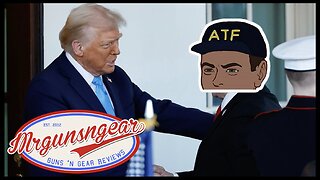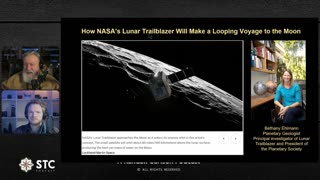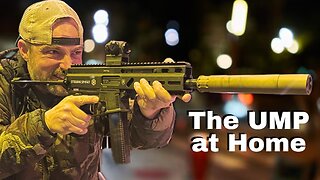Premium Only Content

HARD LANDING AT SPOKANE!
One year when I returned from an extended trip overseas, I was treated to a shockingly HARD landing at Spokane. Airlines always encourage passengers to give feedback on their “flight experience.” I normally never do as a matter of policy. But this one concerned me a little as it was clearly atypical, so I sent the following polite reply. Need I say that no one reached out to me??! I chalked it up to more “corporate stupidity!” Corporate crap? Yes. But not stupidity. I was partly wrong.
QUOTE:
Your on board staff and your gate agents do a masterful job. I won't have anything but good things to say about their efforts.
Your pilots have a tough job. As a former General Aviation Pilot, I can tell you that the landing at Spokane was NOT professional, in fact was so hard as to cause passengers to gasp. It cannot be good for the landing gear. I took a landing video, by the way, and it shows the hard landing. It will be available on line when I have finished loading all my other travel videos. My polite suggestion is that your cockpit crews need more practice in how to make smoother landings..… END-QUOTE.
It turns out my “understanding” lacks one important point. Because passenger aircraft CRUISE at altitudes between 35,000 to 40,000 feet and the outside temperatures there are between MINUS 60 and MINUS 70 degrees for LONG periods of time, and the temperature INSIDE is PLUS 60 or better AND because cabins are pressurized at near 5,000 feet, there is a lot of stress applied to the air-frame and components. Wheels and parts don’t come off by themselves!!
I mentioned the landing to an A and P mechanic (Air-frame and Power-plant, to you non-pilots!) recently, and he gave me an interesting explanation. In general aviation, we practice SMOOTH landings, because they are easy on landing gears and the air-frame. Apparently, with aircraft getting larger and larger and having more and more large landing gears, the cold temperatures for long time periods literally FREEZES the gear and associated fluid driven hoses to an extent not normally encountered at lower altitudes. Because large aircraft do not have time to begin THAWING until closer to 10,000 feet altitude, an effort is made to PLUNK the craft on the ground. The mechanic told me that a SMOOTH landing can drag the wheels along the ground long enough to TURN THEM BALD, destroying $10,000 dollars worth of tires in almost an instant. He said he had seen this with his own eyes through his own experience in the military.
This was all new to me, as I have noticed a tendency for airliners to make fairly abrupt landings. There is a trade-off here and I doubt it is good for the aircraft. In any case, the landing at Spokane was anything but average. In this eight minute video, you can see the greater Spokane area from the air, as the pilot turns and configures the aircraft for landing. Because of the sun’s angle, we chase our SHADOW all the way to the ground! There was NO FLARE-OUT!
I have taken some flack (more than 20,000 views on YouTube) for this post. Some were in denial, some questioned my ability as a pilot to make a judgment, and others had varying reactions to the Shadow that followed us down. One disgruntled pilot said that they get judged unfairly on the last minute of the flight, when everything else was professional. It changes nothing. One man said the pilot was just "landing on a carrier!" The landing speaks for itself. Compare it to other landings, is all I ask! I will post more videos of flying!
Enjoy our show!
-
 5:17
5:17
Mrgunsngear
23 hours ago $6.04 earnedPresident Trump Has Appointed A New ATF Director
32.6K29 -
 48:17
48:17
Athlete & Artist Show
8 days ago $0.75 earnedS5E1: Chucky Announces First Kid, 4 Nations Face Off, and more!
22.6K1 -
 38:30
38:30
hickok45
8 hours agoSunday Shoot-a-Round # 269
53.7K16 -
 1:39:55
1:39:55
Squaring The Circle, A Randall Carlson Podcast
1 day ago#040 Humanity's Expansion Into The Cosmos: A New Age - Squaring The Circle
30.4K4 -
 12:54
12:54
ariellescarcella
17 hours agoYou're NOT Queer, Just Annoying And Boring
20.3K18 -
 18:57
18:57
Fit'n Fire
14 hours ago $1.29 earnedA PDW That Thumps -- Stribog SP45A3 45ACP
22.3K2 -
 2:06:23
2:06:23
Game On!
18 hours ago $2.02 earnedAnother Sunday Without Football...
30.5K3 -
 17:53
17:53
Forrest Galante
19 hours agoHow I Joined a Dangerous Remote Tribe (feat. Nelk Boys)
85.2K14 -
 LIVE
LIVE
Vocalot
1 day agoDay 6! New Here! New Rumble Friends!? 🤙
474 watching -
 34:27
34:27
The Connect: With Johnny Mitchell
1 day ago $18.35 earnedCan He Stop Them? Inside Trumps War On Mexican Drug Cartels & The New Era Of Mexican Organized Crime
53.9K27